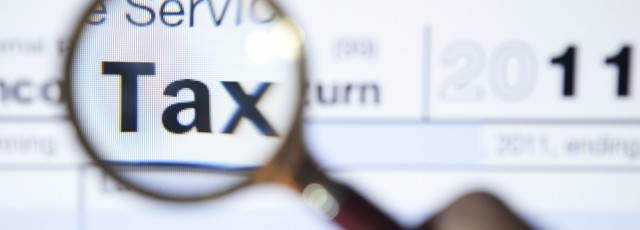
A General Account Ledger, an accounting tool that allows you to keep track of all your accounts, is useful. It serves one purpose: to help you keep track your business' accounts. There are many advantages to using this type of ledger. It is simple to use and can keep track of all transactions in your company. You will need some technical expertise to use it. You can read this article to learn more about GL codes.
GL codes
GL codes for general account ledger can be used to code existing data. It is simple to add numbers and formatting to existing data. Look at the options and select a code. This is one reason a GL Code is so useful. It ensures that data is always accurate. You can also track revenue from a variety sources using GL codes. Learn more about these code in this article.
General account ledgers are full of many transactions that can make it hard to track them all individually. The entire ledger can be searched by using GL codes. Restaurant accountants may use GL codes for reconciling vendor invoices and statements. They can quickly find specific criteria by using these codes and save both time as well as money. Here's an example of how GL codes (general account ledger) can make a huge difference in a restaurant’s financial statements.

Chart of accounts
First, determine the accounting system your company will use. A mix of general and specific accounts is common for most businesses. Asset accounts are used to record company resources, both intangible and physical. This type allows you to track your business's performance across multiple years. These are some tips to remember when creating your chart of accounts.
Your chart will contain the accounts that make your company up. The software will ask you to enter these accounts. Each account will need an opening balance. This is what you use to make debit or credit payments. The opening balance for all accounts on your chart should be known. The chart of accounts can be used to view your business's financial statements. Understanding the differences between different types of account ledgers will help you make better business decisions.
Columns
To make the most of the information you have, you can sort, filter, and drill by columns within the general account ledger. A large general ledger report can be exported as a PivotTable. This makes it easier for you to identify and visualize meaningful trends. Let's take for example, that you're looking at insurance payments in the last 20 years. You'd like to see the total amount of all insurance payments in that time frame.
To understand the accounting process, it's important to understand how general account ledger accounts work. The accounts are set up in the same manner as the financial statements. Accounts in the asset division usually have numbers in the 100- to 50 digit range. It is easier to add accounts to existing accounts if your normal account number has tens digits. These types of columns are organized according the order in which account numbers are.

Order
A debit or credit order is a process of posting debit or credit amounts into a specific account in accounting. The entry order is made by recording receipts. This includes bank statements, invoices, incoming payments and cash vouchers. Transactions are listed in chronological order, including opening, current, closing, and preparatory entries. These transactions are recorded to a general accounting ledger in order to track the factual allocation for all business transactions.
The general account leadger has five accounts, namely equity, assets (or liabilities), liabilities (or expenses). Transactions are recorded to the accounts in the order that they occur. The number column allows for cross-referencing. A transaction that is posted to an asset is recorded as an expense, but it is not recorded until it is credited. This process can be repeated with debits or credits in the same order.
FAQ
What are the various types of bookkeeping systems available?
There are three main types: hybrid, computerized, and manual bookkeeping systems.
Manual bookkeeping involves using pen and paper for records. This method demands constant attention to detail.
Computerized bookkeeping is a way to keep track of finances using software programs. It is time- and labor-savings.
Hybrid Bookkeeping is a hybrid of manual and computerized methods.
What is the difference between bookkeeping and accounting?
Accounting refers to the study of financial transactions. Bookkeeping is the documentation of such transactions.
These are two related activities, but separate.
Accounting deals primarily using numbers, while bookskeeping deals primarily dealing with people.
Bookkeepers record financial information for purposes of reporting on the financial condition of an organization.
They ensure all books balance by correcting entries in accounts payable and accounts receivable.
Accountants examine financial statements in order to determine whether they conform with generally accepted accounting practices (GAAP).
If they don't, they might suggest changes to GAAP.
So that accountants can analyze the data, bookkeepers keep records about financial transactions.
What is the average time it takes to become an accountant
Passing the CPA exam is required to become an accountant. The average person who wants to become an accountant studies for approximately 4 years before sitting for the exam.
After passing the test one must have worked for at minimum 3 years as an Associate before becoming a Certified Public Accountant (CPA).
Statistics
- BooksTime makes sure your numbers are 100% accurate (bookstime.com)
- a little over 40% of accountants have earned a bachelor's degree. (yourfreecareertest.com)
- a little over 40% of accountants have earned a bachelor's degree. (yourfreecareertest.com)
- Given that over 40% of people in this career field have earned a bachelor's degree, we're listing a bachelor's degree in accounting as step one so you can be competitive in the job market. (yourfreecareertest.com)
- Employment of accountants and auditors is projected to grow four percent through 2029, according to the BLS—a rate of growth that is about average for all occupations nationwide.1 (rasmussen.edu)
External Links
How To
How to get a degree in accounting
Accounting is the recording and keeping track of financial transactions. It includes recording transactions made by businesses, individuals, and governments. The term "account" means bookkeeping records. Accountants prepare reports based on these data to help companies and organizations make decisions.
There are two types of accountancy - general (or corporate) accounting and managerial accounting. General accounting focuses on the reporting and measurement of business performance. Management accounting focuses on measuring, analyzing, and managing the resources of organizations.
An accounting bachelor's degree can help students become entry-level accountants. Graduates might also be able to choose to specialize, such as in auditing, taxation, finance or management.
Accounting is a career that requires a solid understanding of economic concepts like supply and demand and cost-benefit analysis. Marginal utility theory, consumer behavior, price elasticity of demand and law of one price are all important. They need to know about accounting principles, international trade, microeconomics, macroeconomics and the various accounting software programs.
Students interested in pursuing a Master's degree in accounting must have passed at least six semesters of college courses, including Microeconomic Theory; Macroeconomic Theory; International Trade; Business Economics; Financial Management; Auditing Principles & Procedures; Accounting Information Systems; Cost Analysis; Taxation; Managerial Accounting; Human Resource Management; Finance & Banking; Statistics; Mathematics; Computer Applications; and English Language Skills. Graduate Level Examinations are required for all students. This examination is usually taken following three years of studies.
For certification as public accountants, candidates must have completed four years of undergraduate and four year of postgraduate education. Candidates must then take additional exams before they can apply for registration.